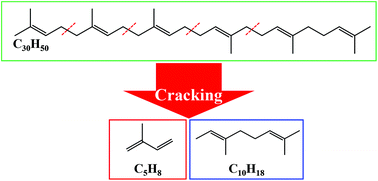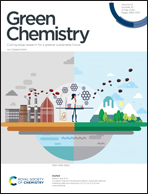Cracking of squalene into isoprene as chemical utilization of algae oil†
Abstract
The craking of squalene was studied with and without heterogeneous catalysts. The thermal decomposition of squalene occurred suddenly as a chain reaction above 723 K, yielding linear C5 (isoprene) and C10 hydrocarbons selectively with a conversion of >90%. The decomposition mechanism may involve allyl bi-radicals, ˙CH2–C(CH3)![[double bond, length as m-dash]](https://www.rsc.org/images/entities/char_e001.gif) CH–CH2˙, intermediates that convert to isoprene, CH2
CH–CH2˙, intermediates that convert to isoprene, CH2![[double bond, length as m-dash]](https://www.rsc.org/images/entities/char_e001.gif) C(CH3)–CH
C(CH3)–CH![[double bond, length as m-dash]](https://www.rsc.org/images/entities/char_e001.gif) CH2.
CH2.



 Please wait while we load your content...
Please wait while we load your content...